
Dichanthelium is genus of flowering plants of the grass family, Poaceae. They are known commonly as rosette grasses and panicgrasses.
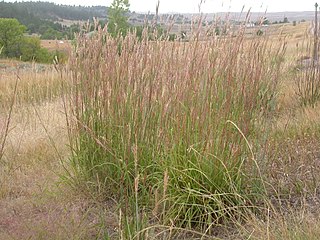
Andropogon gerardi, commonly known as big bluestem, is a species of tall grass native to much of the Great Plains and grassland regions of central and eastern North America. It is also known as tall bluestem, bluejoint, and turkeyfoot.

Panicum (panicgrass) is a large genus of about 450 species of Poaceae grasses native throughout the tropical regions of the world, with a few species extending into the northern temperate zone. They are often large, annual or perennial grasses, growing to 1–3 m (3–10 ft) tall.

Festuca californica is a species of grass known by the common name California fescue.
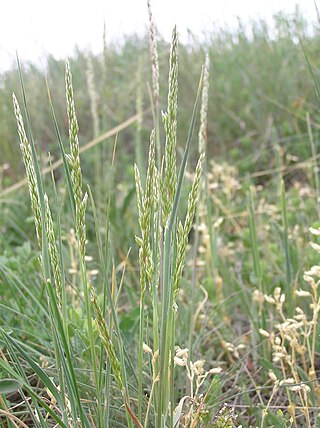
Koeleria macrantha is a species of grass known by the common name prairie Junegrass in North America and crested hair-grass in the UK. It is widespread across much of Eurasia and North America. It occurs in many habitat types, especially prairie.
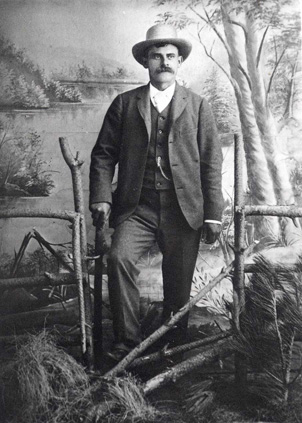
John Bernhard Leiberg was a Swedish-American botanical explorer, forester, and bryologist. He was a self-taught naturalist who worked in the northwestern United States.

Dichanthelium acuminatum, the tapered rosette grass, is a species of grass from the genus Dichanthelium, in North America.

Muhlenbergia richardsonis, known by the common name mat muhly, is a species of grass. It is native to North America, where it can be found throughout much of Canada, Alaska, the western half of the contiguous United States through California, and in Baja California, Mexico.

Calamovilfa longifolia is a species of grass known by the common names prairie sandreed and sand reedgrass. It is native to North America, where it occurs from the Northwest Territories to Ontario in Canada and as far south as New Mexico and Kansas in the United States. There are two varieties, var. longifolia being widespread in the species' range and var. magna being native to the Great Lakes region.

Hesperostipa spartea, formerly Stipa spartea, is a species of grass known by the common names porcupine grass, western porcupine grass, short-awn porcupine grass, porcupine needlegrass, and big needlegrass. It is native to North America, where it is widespread from British Columbia to Ontario in Canada and through the central and Great Lakes regions of the United States. It is a bunchgrass species in the genus Hesperostipa.
Dichanthelium hirstii is a species of grass known by the common name Hirst's panic grass. It is native to the eastern United States, where it is extant in Delaware, New Jersey, and North Carolina. It is extirpated in Georgia.

Dichanthelium clandestinum is a species of grass known by the common name deertongue. It is native to eastern North America, including eastern Canada and the eastern United States.
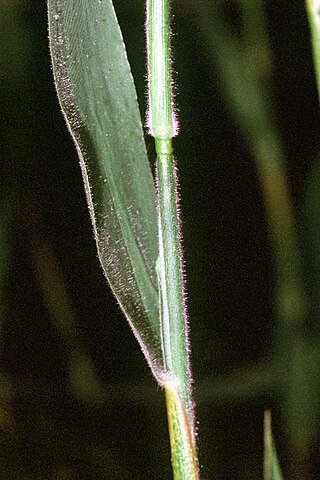
Dichanthelium scoparium is a species of grass known by the common names velvet panicum, velvety panicgrass, and broom panicgrass. It is native to North America, where it occurs in the southeastern United States. It also occurs in the West Indies.
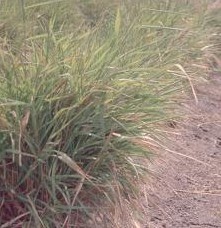
Melica nitens is a species of grass known by the common names threeflower melicgrass or three-flowered melic. It is native to the central United States.

Dichanthelium oligosanthes, known as Heller's rosette grass, fewanther obscuregrass, and few-flowered panicgrass, is a frost-tolerant, perennial grass species native to North America. It is found primarily in the contiguous United States with specimens also reported in British Columbia and Alberta in Canada, as well as south of the Rio Grande in northern Mexico. D. oligosanthes is most frequently in partially shaded glens within woods, recently cut forests, and grassy banks.

Carex brevior, known as shortbeak sedge and plains oval sedge, is a species of sedge native to North America. The specific epithet brevior means "shorter" in Latin.
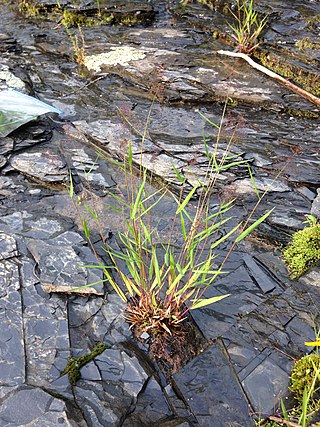
Dichanthelium lindheimeri, commonly called Lindheimer panicgrass, is a species of flowering plant in the grass family (Poaceae). It is native primarily to eastern areas the United States and Canada, with its range extending into the South Central region. There are also outlying western populations in California, New Mexico and Oregon.

Dichanthelium scabriusculum common names tall swamp rosette-panicgrass, tall swamp panicgrass, rough panic-grass and panic grass, is a species of plant found in North America. It is listed as endangered in Connecticut, Maryland, and New York (state). It is listed as threatened in Massachusetts.
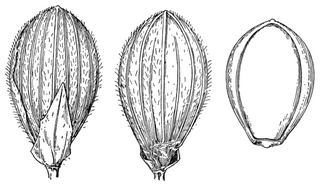
Dichanthelium xanthophysum, formerly known as Panicum xanthophysum, common names slender rosette grass, panic grass and slender panic-grass, is a plant found in North America. It is listed as a special concern and believed extirpated in Connecticut. It is listed as endangered in New Jersey and Pennsylvania.

Dichanthelium ovale, commonly known as eggleaf rosette grass, is a plant found in North America. Dichanthelium ovale subsp. pseudopubescens, common name Stiff-leaved rosette-panicgrass is listed as a special concern and believed extirpated in Connecticut.




















